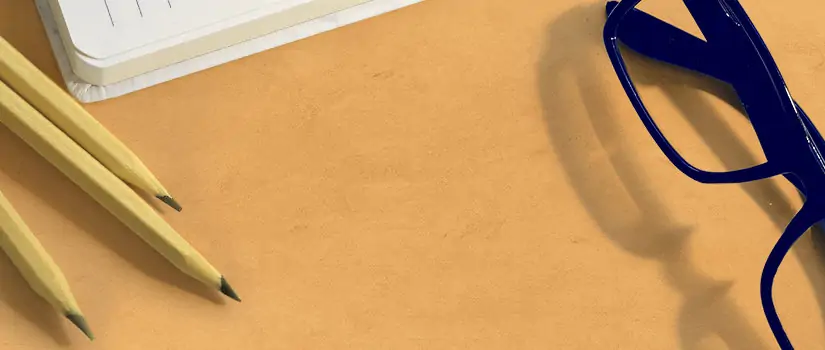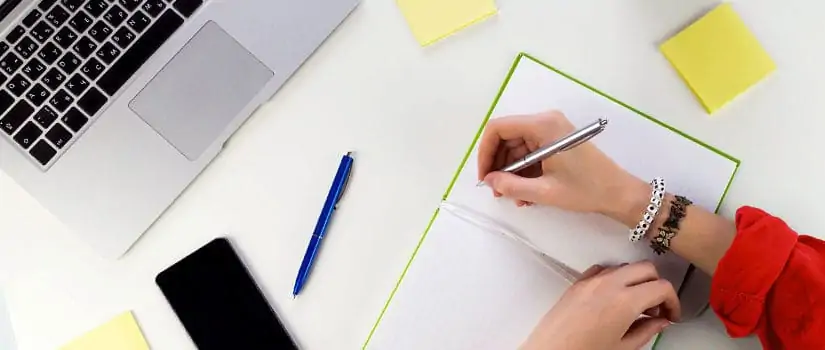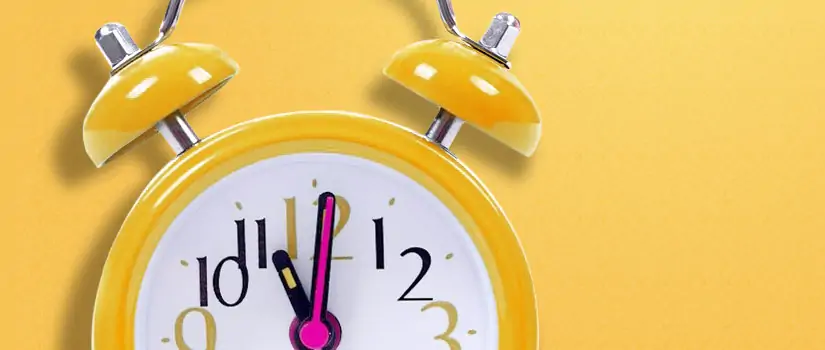
5 Research Tips Your Librarian Wished You Knew
Looking for research tips to make writing that essay a little easier? Libraries and librarians are great resources for student, no matter what the topic is. Every day they help students like you find the most relevant sources for the topic you’re researching for a project—skills that are essential for carrying on into college, grad school, and real life.
Here are the things that your librarian wished you knew about libraries, research and the tools they can provide.
Avoid using questions when conducting a general search online or in a database
When using a database or search engine to find sources or ideas, try to be as specific as possible with your search criteria. Avoid generalizing, and don’t forget to include proper capitalization to ensure you get the most accurate results possible.
Question words like who, how, and what sometimes muddle the search rather than help. For example, instead of typing “what is an annotated bibliography,” you’ll have different, but more relevant search results if you typed “annotated bibliography definition.”
Databases that would otherwise cost you a fee to access are often free at your library
Is there anything more frustrating than finding the perfect journal article, only to find that it lives behind a paywall? If you find an interesting article in a paid database, ask the reference librarian at your library. Chances are, they have access to the database (which means you do, too) or to a database with similar sources.
Don’t forget to check subject headings when conducting your research
These are a systematic list of terms that describe a given subject matter. Subject headings can be one word, two or more words, a phrase, a city, a country, a geographic region or a person. For example, the following are all valid subject headings:
HOSPITALS
ELECTROCHEMISTRY
WOMEN IN MOTION PICTURES
Subject headings are great for three reasons. First, they can help you quickly discern if a source is actually about the topic that you are researching or not. Second, you can use subject headings in an advanced search to help you find sources that are relevant to your project. Third, you can use them to discover other articles. For example, in a database, you can sometimes click the subject heading to see a listing of all title related to that subject heading. From there, you can do a little browsing and see if any other source interests or inspires you.
Libraries have more than just books
They can provide FREE access to the Internet, archival materials, audio recordings, films, databases, and so much more. They even often offer classes that may help you in your research or develop your reading and writing skills. (Bonus tip: learn how to do a works cited page.)
When in doubt, ask your librarian!
When your research is complete, don’t forget to run your writing assignment through a plagiarism checker, like the one you can find right here on BibMe! This will help ensure that you didn’t miss a citation or accidentally pick up text from your research. You can also check your assignment for grammar errors like a misspelled pronoun, incorrect subject-verb agreement, an uncapitalized proper noun, and more!
...
5 Common Grammar Errors on the SAT Writing & Language
Studying for the SAT Writing & Language might sound like an endless slog through obscure grammar rules. The secret, though, is that the test tends to reuse the same few concepts. If you take the time to master the most frequently tested grammar rules, you’ll find the SAT Writing & Language test much easier. (Here’s another SAT hack: to double-check your practice writing prompts, run them through BibMe’s online grammar checker!)
To make your life easier, here’s a list of 5 common grammatical errors tested on the SAT, with examples.
1. Subject-Verb Disagreement
Here’s an example of subject-verb disagreement: Jessica are going to the park. Yuck! Sirens are probably going off in your head, indicating that there is indeed a grammatical error in that sentence. What you’re noticing is incorrect subject-verb agreement. In that example sentence, you know that “Jessica” is a singular subject, and therefore should be paired with “is,” not “are.”
The sentence should read: Jessica is going to the park.
On the SAT, subject-verb disagreement is more challenging to spot. The test will spatially separate the verb from the subject so you don’t notice the disagreement. For example, the SAT loves to insert a prepositional phrase between the subject and the verb. Check out this sentence:
The group of high school students is going on a field trip tomorrow.
In this example, “group” is the singular subject of this sentence while “is” is the singular verb. The prepositional phrase “of high school students” is inserted between the subject and the verb to make it harder to see that “group” should be paired with “is.” Here the SAT is trying to trick you into finding an “error” in this perfectly correct sentence!
Keep an eye out for these prepositional phrases, and your score will certainly be in agreement with your grammar abilities.
2. Comma Splice
A comma splice occurs when two independent clauses (or clauses that can stand alone as sentences) are incorrectly connected by just a comma. Take a look at this incorrect example:
I went to the grocery store to buy some apples, I ended up buying a lot of snacks.
This type of punctuation error is one of the most popular errors on the SAT. To fix a comma splice error, you can:
- Connect the two independent clauses with a semicolon
I went to the grocery store to buy some apples; I ended up buying a lot of snacks. - Add a conjunction (like “and” or “but”) after the comma
I went to the grocery store to buy some apples, and I ended up buying a lot of snacks. - Separate the two independent clauses into two sentences
I went to the grocery store to buy some apples. I ended up buying a lot of snacks.
Whenever you see a comma on the SAT, make sure it’s not being used to incorrectly connect two complete sentences!
3. Wrong Comparison
Check out this grammatically incorrect sentence: The performance of my sister’s band was better than my cousin’s band.
It can be tricky to spot, but that sentence is grammatically incorrect. Right now, it’s comparing a performance to a band. For wrong comparison questions, you want to ensure that you’re comparing like with like.
To fix this error, you want to be extra clear as to what’s being compared. Here are some ways you can fix that sentence:
- The performance of my sister’s band was better than the performance of my cousin’s band.
- The performance of my sister’s band was better than that of my cousin’s band.
It may seem repetitive, but whenever you have a comparison, ensure you’re comparing apples with apples!
4. “Who” versus “Whom”
It’s easy to get stressed about when to use “whom” since we don’t tend to use it on a daily basis. Though it’s not one of the most common types of grammar errors, knowing when to use “who” versus “whom” will make you feel more confident when taking the SAT.
On the test, “whom” usually appears after a preposition. Here’s an example of the incorrect use of “whom”:
Whom took my scarf?
In this example, you should say, “Who took my scarf?”
So when should you use “whom?” You should use it when it’s the object of a sentence. Still not sure what that means? No problem! In most cases on the SAT, there’s a preposition in front of “whom.” So if you see “to who” in a sentence, you’ll likely need to change it to “to whom” (think of the correct phrase: “To Whom It May Concern”).
5. Incorrect Modifier
Take a look at this incorrect example: After taking a long hike through Yosemite, Ryan’s sneakers were falling apart.
Here it seems like Ryan’s shoes went hiking, not Ryan. This is a great example of an incorrect modifier. The SAT loves to begin a sentence with a descriptive phrase but not immediately identify what is described. Ensure that whatever word follows the comma after the descriptive clause is what’s being described.
To fix that incorrect example, we should say:
After taking a long hike through Yosemite, Ryan noticed that his sneakers were falling apart.
Once you’ve gotten your head around these common grammatical errors, and sharpened your eagle eye with plenty of practice questions, you’ll be ready to rock the SAT Writing & Language!
While you’re at it, check out our helpful citation guides. You may not need to demonstrate how to cite a book, create MLA citations or an APA reference page for the SAT, but these guides will help you in many other language and learning situations!

Step Up Your Adjective Game!
Have you ever written a paper only to realize that you’re using the same, exact vocabulary over and over again? Acknowledged that you’ve totally used words like “logical”, “thorough,” and “crucial” so many times they’ve lost all meaning? Writing a paper for a college class can feel like a bit of a drag sometimes. When you’re working so hard on structure, citations, and formal academic voice, it’s easy to fall into a rut with your writing style.
For your next paper, it’s time for you to mix it up! Adjectives are the spice cabinet of writing: you can’t have an interesting final product without them. You can also combine them in an infinite number of arrangements for different effects. If you’re tired of the same old words, try out some of these new ideas.
Thesaurus Time
The fastest way to finding new, exciting words to use in your papers? That trusty old friend, the thesaurus. If you’re a little nervous about trying to increase your vocabulary or you can't think of something off the top of your head, using a thesaurus is a surefire way to ease into it.
The trick here is to look up the ordinary or overused adjective and find a replacement that is a little more unusual or specific. The thesaurus has a ton of words that you can use to substitute for the same old adjectives—and this trick can work for a noun or verb too! If you’re not sure what to say, just use an “ordinary” word and then replace it with something in the thesaurus.
Pretty can become beautiful, cute, comely, attractive, elegant, or many more. Each of these adjectives is a little more evocative and a little less ordinary than just plain pretty.
Specificity
The issue with commonly used words is that they’re often on the generic side; switching them out for a different adjective can have the dual benefit of making your writing more interesting and making it more specific. When it comes to academic writing, the second-most important thing is that it’s specific. The most important thing, of course, is that you proofread or run a spelling and grammar check on your paper before turning it in!
Let’s try out an example. Imagine you’re writing a paper, and at a certain point, you want to talk about a scientific discovery.
In 1967, scientists made a big discovery.
There is nothing technically wrong with this sentence, but “big” is one of the most generic adjectives out there. Try to find a substitute that adds nuance to your sentence. Even if it’s not an exact synonym, it’s more important to find an unusual adjective that gives more meaning.
In 1967, scientists made an extraordinary discovery.
In 1967, scientists made a game-changing discovery.
In 1967, scientists made a tremendous discovery.
Each of these words carries its own connotations that give a little more texture to the sentence, and that’s important for giving readers a sense of what to expect.
A Word of Warning (Caution, Guidance, Advice)
When you’re using unusual adjectives (or nouns, or verbs), it’s easy to get carried away and include really obscure words just for the fun of it or to try to sound extra smart. Doing this, however, usually leads to the exact opposite effect: a paper full of words like pulchritudinous or capacious will often distract from the actual point of the paper and it won’t sound like you wrote it anymore. Try to walk a middle ground between using words that are unusual enough to spice up your writing without intruding on the style and flow of the paper, and you’ll be surprised how quickly you can expand your vocabulary and improve your writing skills!
Now, let’s switch gears and end this post with a friendly reminder to always cite your sources. BibMe.org is here to help you develop your MLA works cited page, APA reference page, an annotated bibliography, and more!
...
SAT Reading Prep You Can Do Daily
Without the stress of group projects, quizzes, or formatting a works cited page, summer is the perfect time to start gearing up for the SAT Reading. Whether you’re on the road or at the beach, there are a few ways you can start prepping bit by bit.
Have you ever read a sentence three times only to find yourself wondering, “what the heck did I just read?” You’re not alone: one of the most common obstacles students encounter in the SAT Reading is remembering information from the passages.
To help you work on the valuable SAT skill of retaining information, here’s a four-step process you can use to get ready for the fall SAT on a daily basis.
Step One: Figure Out How to Get the Newspaper
To start prepping, all you need is access to a good ol’ fashioned newspaper. You might be thinking, “But no one reads the newspaper anymore!” Here’s the thing: using a newspaper is a great way to prep for the SAT because one newspaper contains articles on all sorts of topics. Just like the SAT, you can read about arts & culture, current events, and more. Plus, an actual newspaper mimics the SAT since both are on paper.
An easy and free way to read the daily paper is to visit your local public library. You can try several different newspapers to see which one you like best.
Daily 5 minute task: none – one time task!
Step Two: Get in the Habit of Reading an Article a Day
Once you have access to the newspaper, start reading one article per day. That’s it! Don’t worry if you don’t totally understand the article. Getting in the habit of reading is the important part.
The SAT Reading will ask you to answer questions on different types of passages. To help you prepare, below is a sample weekly schedule of what kinds of articles to read. That way, you can get accustomed to reading about topics that might be unfamiliar.
Sun. | Mon. | Tues. | Wed. | Thurs. | Fri. | Sat. |
Arts & culture | International news | Business | National news | Science | Local news | Whatever you like! |
Like what you read? Save it to incorporate it into a research paper next year!
Daily 5 minute task: read one article a day
Step Three: Create Your Own Note-Taking System
After getting into the habit of reading an article a day for one week, begin determining your preferred note-taking method. By learning how to take notes in a way that works for you, you’ll retain more information while maintaining test-taking stamina. Taking notes on your daily newspaper article is a great way to practice.
Most people know that underlining main ideas is helpful. Other ways to take notes include circling proper nouns, dates, and numbers, marking off lists of examples, etc. Feel free to get creative, but keep in mind that you’ll only have your #2 pencil on test day (i.e. don’t use highlighters or multi-colored pens).
Bonus: learn how to cite sources here.
Daily 5 minute task: take notes while reading an article
Step Four: Learn How To Identify the Main Idea
Once you’ve gotten used to taking notes while reading your daily article, end your five-minute routine by identifying the article’s main idea. A lot of the SAT Reading questions will ask you to determine the author’s main point, a skill that takes real-time practice.
Keep in mind that the difference between a main topic and main idea is that a topic refers to the article’s subject matter, whereas the main idea is the argument behind the topic. For example, a science article’s topic may be climate change, but the main idea is that human activity is contributing to climate change.
Daily 5 minute task: write one sentence identifying the main idea after taking notes while reading.
This four-step process over time will help to improve your reading comprehension and retention. Not only will this help you be ready for the SAT Reading, but you'll also find that you can apply this process to your class readings too!

ACT Prep You Can Do Daily
By Jillian Schleiden
When you picture studying for the ACT, you might imagine yourself surrounded by piles of books with dark circles under your eyes from the long hours of work. But it doesn’t have to be this way! You can prepare for the ACT bit by bit, everyday. It just requires a little planning and a dash of strategy.
Here’s how you do it:
1. Choose Your Resources
There’s a positive sea of prep material for the ACT. Walk into a bookstore and you’ll see a dozen manuals, tomes of practice questions, and even more “quick and easy” guides to getting a great score. The good news is, you only need a few specific resources:
- A book of practice questions
- A guide to the material covered in the test
- 2-3 practice tests
You can usually find these combined in one book, but feel free to mix and match. Make sure your practice tests address specific content areas within each section. For instance, the English section should show you how you did with grammar, as well as main ideas and vocabulary. (For a comprehensive review of parts of speech, check out our pages on conjunctions, nouns, adverbs, and more.)
The ACT website also offers some free resources for studying, including recommendations for printed materials.
In addition to a book, you’ll likely find it helpful to have:
- Sticky-note style tab markers for your books
- A notebook and pen
- Index cards
2. Pinpoint Your Weak Areas
The next step is to complete a practice test. Give yourself the same testing set-up as you’ll have on the real test. This means:
- Basic calculator only
- No resource materials outside of what the test provides
- No phone or other devices
- Time limit per section
Make sure you take the test somewhere you won’t be disturbed so the setting is as realistic as possible. If you really want to be on the ball, take it in the morning. This will be especially enlightening for you if you’re not a morning person!
Grade your test and then analyze the areas where you need the most work. Self-grading the essay portion can be a challenge, but you can ask a friend or parent to grade yours against the ACT rubric, as well as run it through our grammar checker to spot writing mistakes.
Rank the test areas from “Help, I have no clue what I’m doing” to “I can do this in my sleep.”
3. Create Your Guide
Get out those fancy colored tabs you purchased and the study guide you chose. Color code the areas you just ranked. Your weakest areas could be red, your strongest areas could be green, and so on. Choose up to five colors.
Now, create your schedule for the week. Plan a day each week to review the areas where you already do well. Then, give two to three days to the areas where you really struggle, and the last day or two days to the middle areas. You won’t need to spend much time each day studying if you’re being this strategic.
From here, the way you attack the material at hand is up to you. You can:
- Work from the beginning to the back of the material by color code
- Work by subject area each week (if certain areas are a big struggle for you)
- Start with the familiar material and work your way into the unfamiliar
Stick with your schedule every day! This daily routine is what saves you from long study sessions.
4. Study smart
Research has shown that trying to answer questions, even when you’re really not sure, and then checking your work is one of the most successful ways to learn. This is why there are so many books of practice questions! Add at least five practice questions to your studies each day.
As you create your study schedule, remember to review any test-taking vocabulary you need to know. Formal test taking language may vary from what you learn in high school. Flashcards are an easy way to master these words. If you have someone in your life willing to help, use one of your study days to have them check you card by card.
5. Re-check and Repeat
About halfway through your summer break, take another practice test in the same setting. Keeping the variables the same gives you more honest results.
You’ll see that you have new areas of need because you’ve started to master the old areas. Go back through your guide book and practice questions and reassign your colors and days of work. Now keep at it until the end of the summer!
By carefully structuring what material you study by day, you’ll master new material without forgetting the old. Long hours of cram sessions are not needed to master the ACT!
---
Still need to create citations? BibMe is here for you. Learn how to cite a website in MLA (or another style), create an APA title page, review our annotated bibliography example, and more!

4 Simple Steps to Writing a Good Thesis Statement
What is a Thesis Statement Exactly?
A thesis statement is a single sentence that explains the argument you want to present in a paper. It is most often located in the first or second paragraph of your paper. If your paper is a tree, the thesis statement is the single seed it grows from.
You Mentioned an Argument? Do I Have to Argue?
Most academic outlets expect that you will present an argument. It is not sufficient to simply report what you have read. You must take it a step further and come to a conclusion based on the information you have gathered. This conclusion is your thesis and your paper is your defense of the thesis.
Tip: If you are not sure if your paper needs a thesis, ask your instructor.
Ok, so How Do I Write a Thesis Statement?
Follow our easy steps.
Step #1: Research First
Students often make the mistake of coming up with a thesis before doing any research. A better method is to begin with research in your field of study and look for patterns or themes. Not only does this make proving your thesis easier, it also prevents you from tunnel vision that could result in your arguing a thesis that is not true.
Step #2 Inspiration List
As you research, write down any ideas or themes that you notice as you go along. Look for subjects that are recurring, interesting or controversial. As an example, let’s say you are researching street art and graffiti you might write down the following:
- Some people love street art and others think it is vandalism.
- Certain cities seem to attract street artists more than others.
- Street art and graffiti are not considered the same thing.
- More visible and public areas are prized by street artists.
- Street art can be viewed for free.
Tip: Keep track of where you found your most compelling research; it’s not crazy to start building a works cited page in MLA or an APA reference page this early. It just means that once you are ready to write your thesis statement, you’ll already have everything you need to build an outline for the rest of your paper.
Step #3 Get Creative
Take a look at your inspiration list and try to draw a unique conclusion that you have not already read about. When it comes to papers, creative ideas that can be supported by strong evidence are optimal. Based on our list, we could reasonably argue that:
Street art is the most accessible modern artform.
#4 Test It
If you can answer yes to all of the following questions, your thesis statement is ready.
Could someone reasonably dispute your thesis?
Someone could argue that the sky is green, but it is not reasonable.
Is your thesis provocative or compelling?
Interesting ideas make reading more fun for your grader, which means a better grade for you.
Is there enough research to support your argument?
A thesis is only as good as the research it is built on. Make sure that there’s enough credible information to support your research paper topic.
Is your thesis statement simple to understand?
If your statement is too long or meandering take some time to edit down to a more basic version.
Remember: a thesis statement is a research-based opinion. Keep it clear and concise and you are on your way to a strong final paper.
---
Want guidance on your writing? Looking for a quick plagiarism or grammar check? Or maybe you need to build citation in Chicago Manual of Style or another format. Try BibMe Plus today for help with all of it!
...